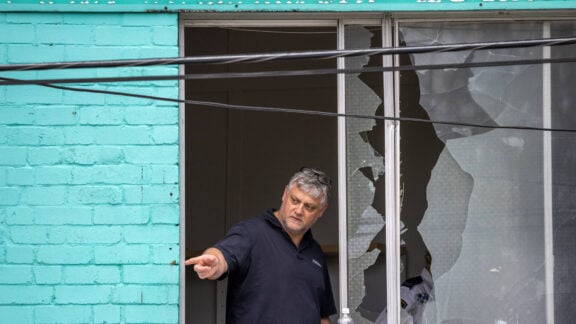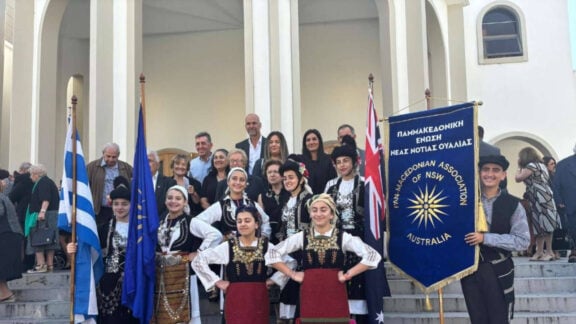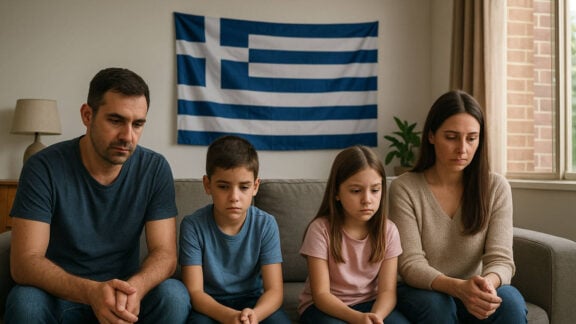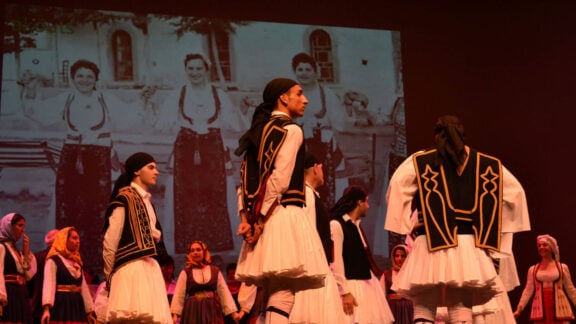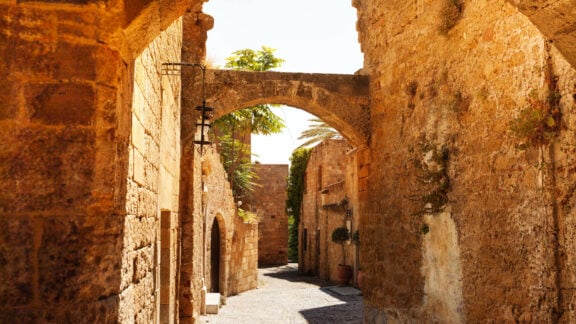Barramundi is the most popular fish for eating in restaurants according to the Australian Seafood Cooperative Research Centre. It is also the most prized sports fish in the Northern Territory with Darwin as its undisputed fishing capital. What if we told you this too was a Greek first?
Historians Leonard Janiszewski and Effy Alexakis, in their book Greek currents in Australian Waters: Greek Australians and the Sea, apart from exploring the legacy of almost 40 Greeks that migrated Down Under in the early 1900s laying part of the foundations of what Australia stands for nowadays, reveal yet another contribution.
In their research for Macquarie University they found that it was those Greek migrants that entered the marine and wharf labour avenues that introduced barramundi fish into the Australian market.
THE HISTORY
Naturalisations in Australia prior to 1903 reveal that almost 40 Greeks had recorded their occupations as either mariners or as wharf labourers – most being located in South Australian ports, followed by Queensland and New South Wales. Employed – together with other European and British migrants – to work the wharves left idle by striking members of the Waterside Workers’ Federation, they found that the underlying racial tensions of ‘White Australia’ were quick to surface. Non-British ‘scab labour’ was particularly targeted by union retaliation – verbal abuse, pelting with debris, and bashing, pushing Greeks to develop strong connections with Indigenous communities to whom they delivered supplies and exchanged fishing techniques.
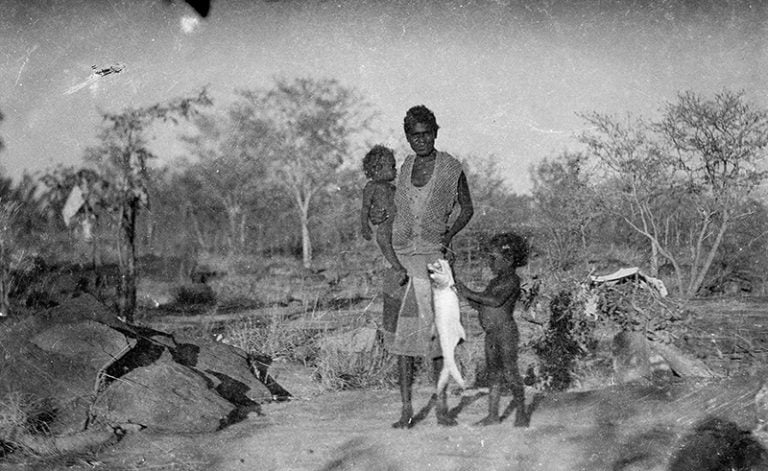
“The name barramundi comes from an Aboriginal term for ‘fish with big scales’, Janiszewski tells Neos Kosmos.
“It is an acquired taste, barramundi, that is. Indigenous communities knew the outback and were to track food sources as well as the best ways to hunt those food sources.”
Barramundi fish was a main food source for Australia’s first peoples but at the time, Anglo Australians were far from interested in consuming it due to its muddy taste and difficulty to catch.
For the Greeks, however, barramundi is just a seabass variation and super close to a fish extremely popular in the Greek cuisine, the platypsaro.
Since at least the Great Depression, Greeks at Thevenard, near Ceduna, on the west coast of South Australia’s Eyre Peninsula, have been catching whiting and also developed a small, though thriving, shark liver oil industry during those years. As their relations with Indigenous Australians strengthened, the more they mastered the art of barramundi fishing and integrated it into their diet.
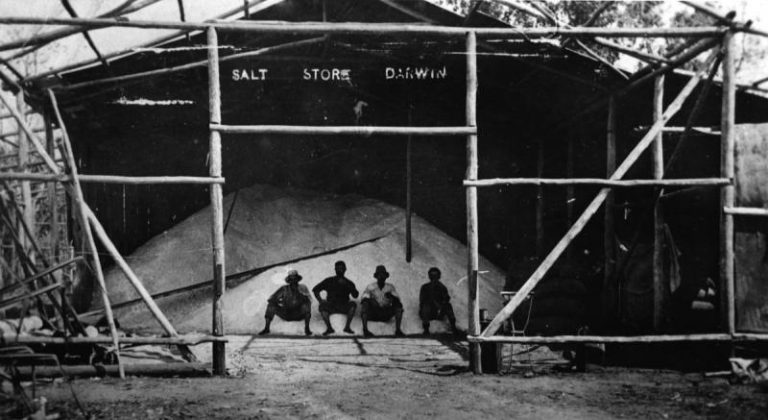
THE BARRAMUNDI GREEKS
In the 1930s and early 1940s two Kytherian Greek brothers in Tasmania, Gregory and Anthony Casimaty, acquired trawling vessels, employed Greek fishermen to run them (Victor and Theo Vanges), and ventured into the netting of flathead and crayfish. In the process, Danish seine fishing techniques were introduced into Australian waters and Tasmania’s governor, Sir James O’Grady, appointed the brothers as his official fishmongers. While Casimaty appears to be one of the first to have attempted barramundi fishing on a larger scale, George Margaritis who was actually nicknamed ‘Barramundi’, regularly caught the fish in the Northern Territory’s rivers, creeks, and mangrove estuaries from the 1930s until his death in 1952.
“Another Greek from Macedonia, Kosmas Gougos, is also said to have been an early barramundi fisherman,” Janiszewski adds.
“But it wasn’t until the Haritos brothers that barramundi was finally introduced to the European palate.”
The Haritos family was already financially robust and established in the Australian market when Gouros and Margaritis stimulated their interest in the species. Their father Efstratios arrived in Darwin in 1915 from Lesvos island. He acquired exceptional skill in salt production on the Turkish coast and this proved invaluable for Darwin Salt, which supplied Darwin’s retail butchers, residents, buffalo shooters, and outlying cattle stations. Haritos soon became a salt producer with major influence and formed a great network.
From the late 1940s until well into the 1960s, his sons George, Ningle, Michael, and Jack dominated the market seeking adventure and enterprise in water-related pursuits.
“It was mainly George Haritos who became exceptionally skilled at barramundi fishing using traditional Aboriginal spearing techniques,” Janiszewski continues.
“Although he was mainly known as a notorious water buffalo hunter and crocodile shooter.”

THE OPPORTUNITY
After World War II, relations between Greek migrants in Australia and other European communities began to strengthen and it was then that Ningle saw and seized the business opportunity.
“Ningle is accredited with the idea of exporting the barramundi that the brothers were catching, to the southern states, which later stimulated international interest,” the historian stresses.
“He decided to send the fish south via less expensive back-freight on Trans Australian Airlines,” he says explaining that it was this call that facilitated the opportunity for the fish finding its way onto the plates of international athletes during the Melbourne Olympics in 1956, establishing interstate markets for the fish in Melbourne, Sydney, and Adelaide.
“He saw it was profitable and had mastered the know-how of commercial barramundi fishing beyond anyone else in the Northern Territory.
“He just went ‘we know how to catch it; let’s see whether or not the European Australians would be interested in taking it up’. The rest is history.”
Feeling hungry? Here is three of the most popular barramundi recipes.
Grilled barramundi with charred Serrano-basil sauce (Time: 30 minutes Serves: 4)
For the grilled barramundi:
4 barramundi fillets, skin-on or skinless
Salt and pepper
6 tablespoons extra virgin olive oil
For the charred Serrano basil vinaigrette:
2 Serrano chillies, grilled and chopped
3 tablespoons diced red onion
3 garlic cloves, finely chopped
1 tablespoon Dijon mustard
1 tablespoon balsamic vinegar
1/4 cup rice wine vinegar
1/4 teaspoon kosher salt
1/4 teaspoon freshly ground black pepper
1/2 cup olive oil
2 tablespoons finely chopped fresh basil
Method:
1. Combine the Serranos, onion, garlic, mustard, vinegars, salt and pepper in a blender and mix well.
2. With the motor running, slowly add the oil and blend until emulsified. Pour into a bowl and stir in the chopped basil.
3. Heat grill to medium-high. Brush both sides of each fish with the oil and season with the salt and pepper. Grill fish until slightly charred on one side, 4 to 5 minutes.
4. Using a heavy-duty spatula, carefully turn the fish over, close the cover and continue grilling until the fish is just cooked through, 6 to 7 minutes.
5. Remove from the grill and immediately drizzle fish with 2 tablespoons of the vinaigrette.
Tangy caper barramundi (Time: 35 minutes ∙ Serves 4)
Quick broiled barramundi fillets with hot tomato and olive sauce (Time: approx. 60 minutes ∙ Serves 4)
3 tablespoons plus 2 tbsp olive oil, divided
2 kg golden potatoes, cut into 1-inch chunks
1 large onion, diced
4 large garlic cloves, thinly sliced
60 kilograms tin oil-packed anchovies, drained
2 tbsp tomato paste
800 kilograms candiced tomatoes
1 cup pitted whole kalamata olives
2 tablespoons capers, drained, roughly chopped
1 teaspoon dried Italian herb blend
1/4 teaspoon dried red pepper flakes
4 barramundi fillets
Juice of 1/2 lemon
Salt and pepper
4 cups wild arugula (rocket)
Method:
1. Preheat oven to 180 degrees C. Line a baking sheet with parchment paper.
2. Toss the potato chunks with 1 tablespoon of oil. Spread in an even layer over the lined baking sheet. Season well with salt. Bake for 20-25 minutes, or until cooked through.
3. In the meantime, heat 2 tablespoons of the olive oil in a 3-quart saucepan. Add the onion and cook, stirring often, until it starts to soften. Add the sliced garlic and cook for another 3-5 minutes, or until the garlic is golden and fragrant.
4. Add the anchovies and break up a little with a wooden spoon or spatula. Add the tomato paste and cook for 30 seconds. Add the diced tomatoes, olives, capers, Italian herbs, and red pepper flakes. Stir well. Bring to a low simmer, cover, and let cook for 20-30 minutes.
5. When the potatoes are finished roasting, transfer to a bowl and keep warm. Pat barramundi fillets dry with paper towels. Rub each fillet with a little olive oil (about 2 teaspoons total). Place skin side up on the lined baking sheet and squeeze a little lemon juice on top. Season well with salt and pepper.
6. Turn oven broiler on to low and adjust oven rack to middle upper level. Broil the barramundi for 5-8 minutes, or until skin is nicely crisped and fish is cooked through. It should flake easily with a fork.
7. Arrange the arugula on a serving platter and top with roasted potatoes, followed by the barramundi fillets. Top with a little of the sauce and serve the rest on the side.

